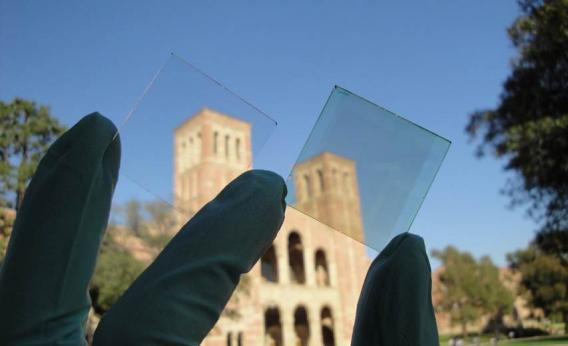Could we soon live in a world where our windows—and even our computers—are collecting power with transparent solar cells?
Researchers at UCLA have developed a new polymer solar cell (PSC) that boasts 70 percent transparency—a big leap ahead of earlier solar cells, which were only about 10 percent transparent to the human eye. The new PSCs work by using a photoactive plastic that converts infrared light into electricity while allowing other forms of light to pass through it.
According to UCLA’s materials science and engineering professor Yang Yang, the flexible new transparent solar cells could lead to a wide variety of real-world applications: smart windows and other building materials, parts of portable electronics, and even transparent computers.
Apparently researchers from the university’s school of engineering, along with the department of chemistry and biochemistry made the transparent solar cells by combining a mixture of silver nanowire and titanium dioxide nanoparticles to make a composite film as the top transparent electrode, replacing the opaque metal electrodes usually used in solar cells.
“The near-infrared photoactive polymer absorbs more near-infrared light but is less sensitive to visible light,” says a release about the project, “balancing solar cell performance and transparency in the visible wavelength region.”
Perhaps most importantly however, UCLA’s team says the cells can be produced at a high volume for a low cost—often the biggest challenge in any ground-breaking tech developments like this—with a 4 percent power conversion efficiency (the electrical power produced by the cell, divided by the light power falling on the cell). A low number, maybe, but considering the low cost, it’s a good number.
Sooner rather than later, the development of this type of PSCs could allow us to cover a giant glass skyscraper with transparent cells and pull some serious wattage from the sun. Or maybe even better: make components that could, for instance, double as a protective coating on your iPad screen, so you didn’t have to plug it in as often.
